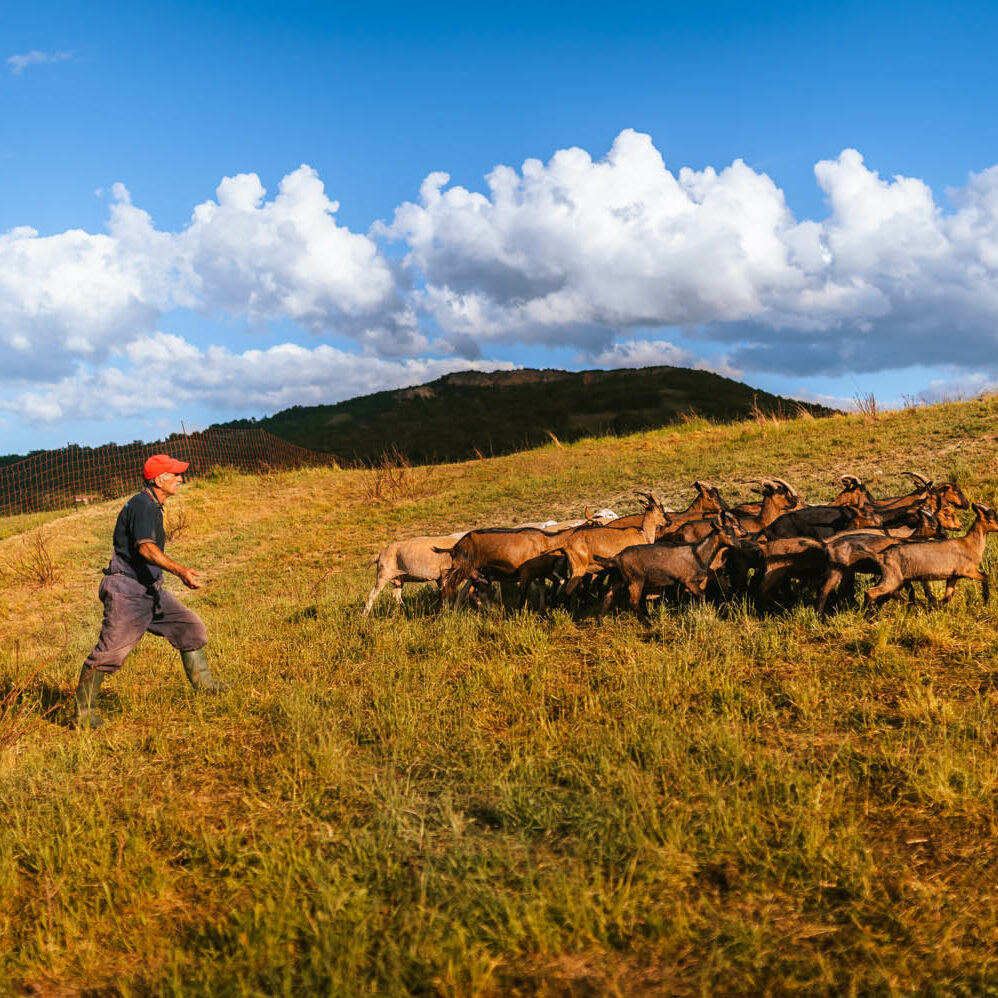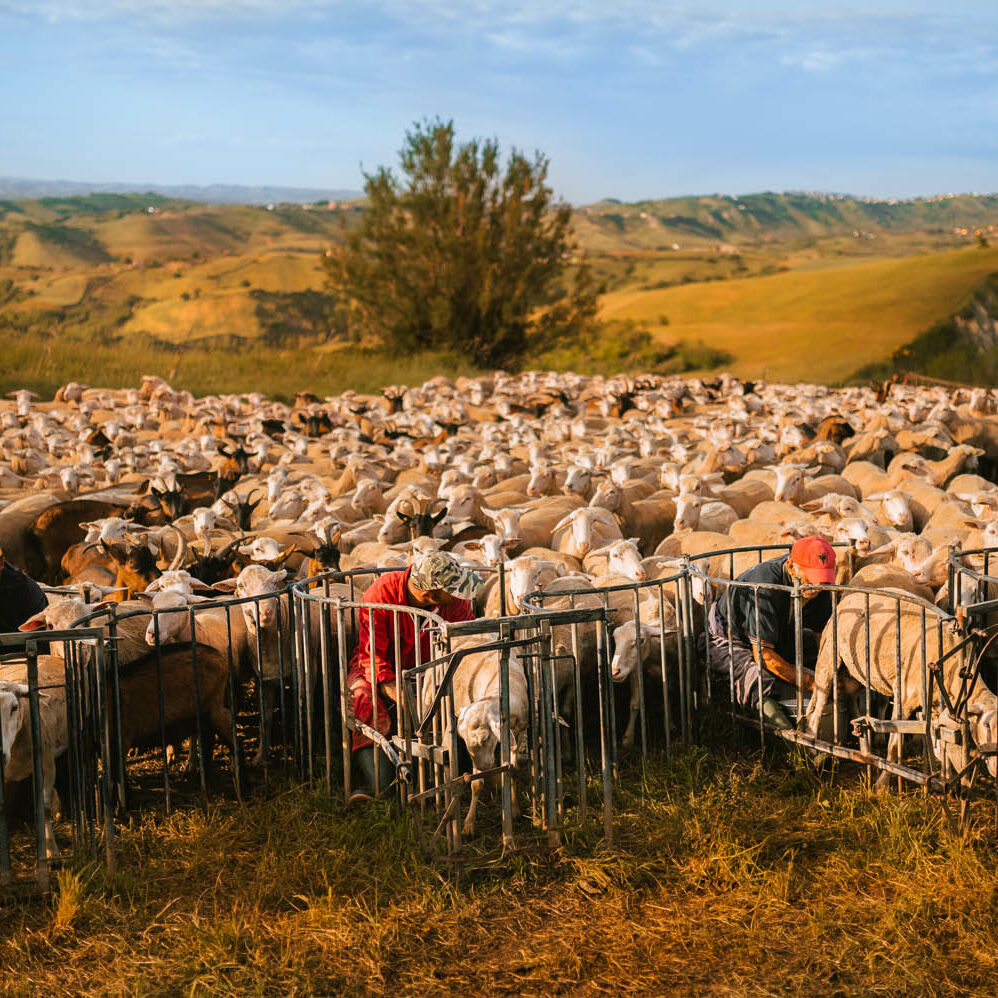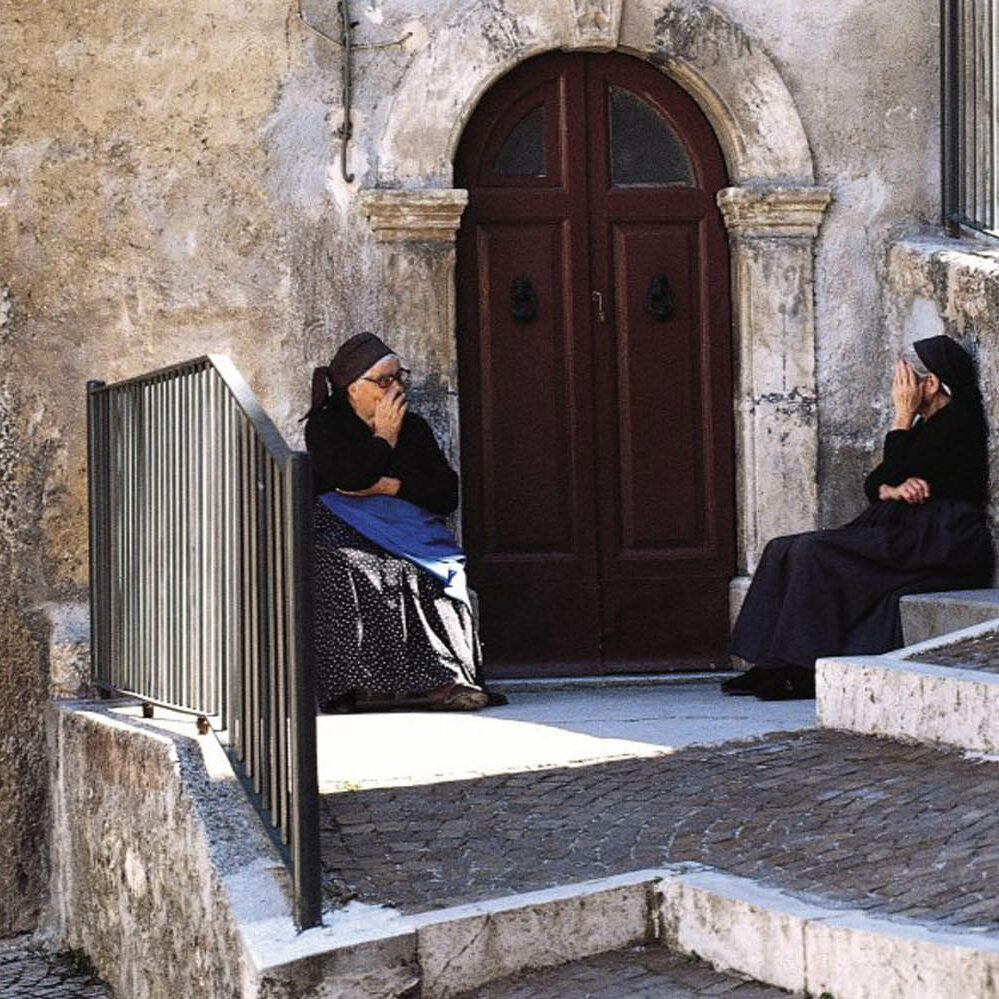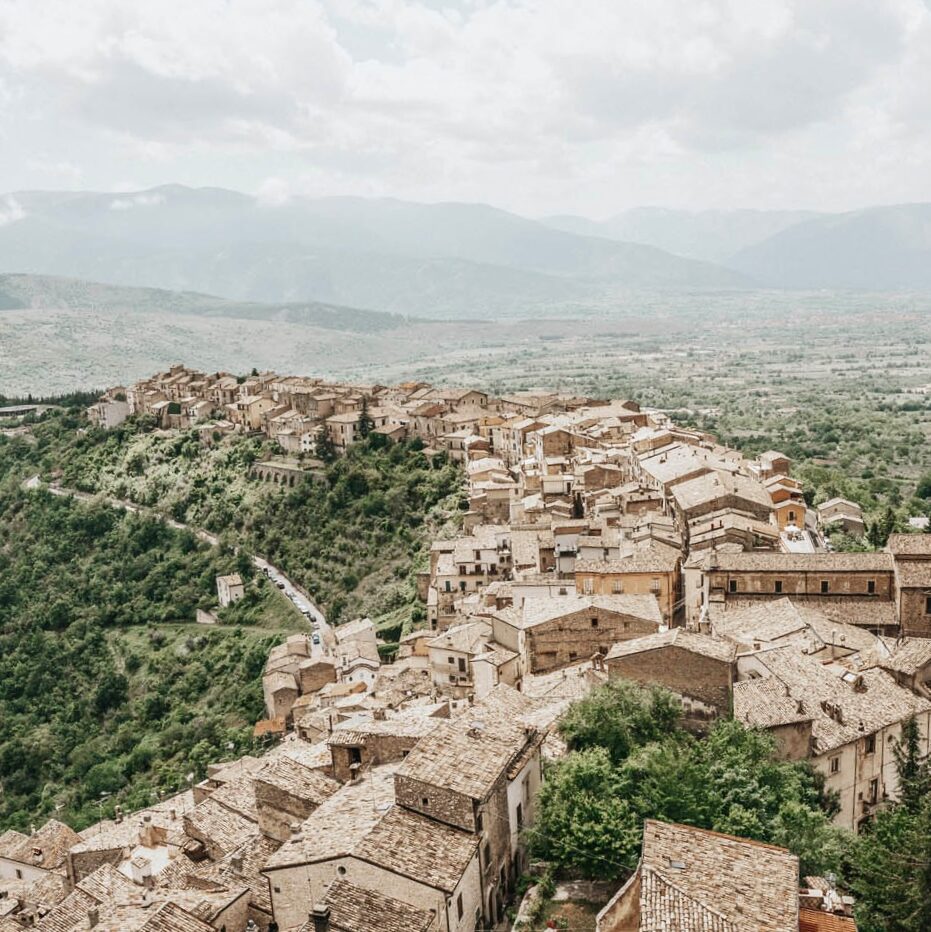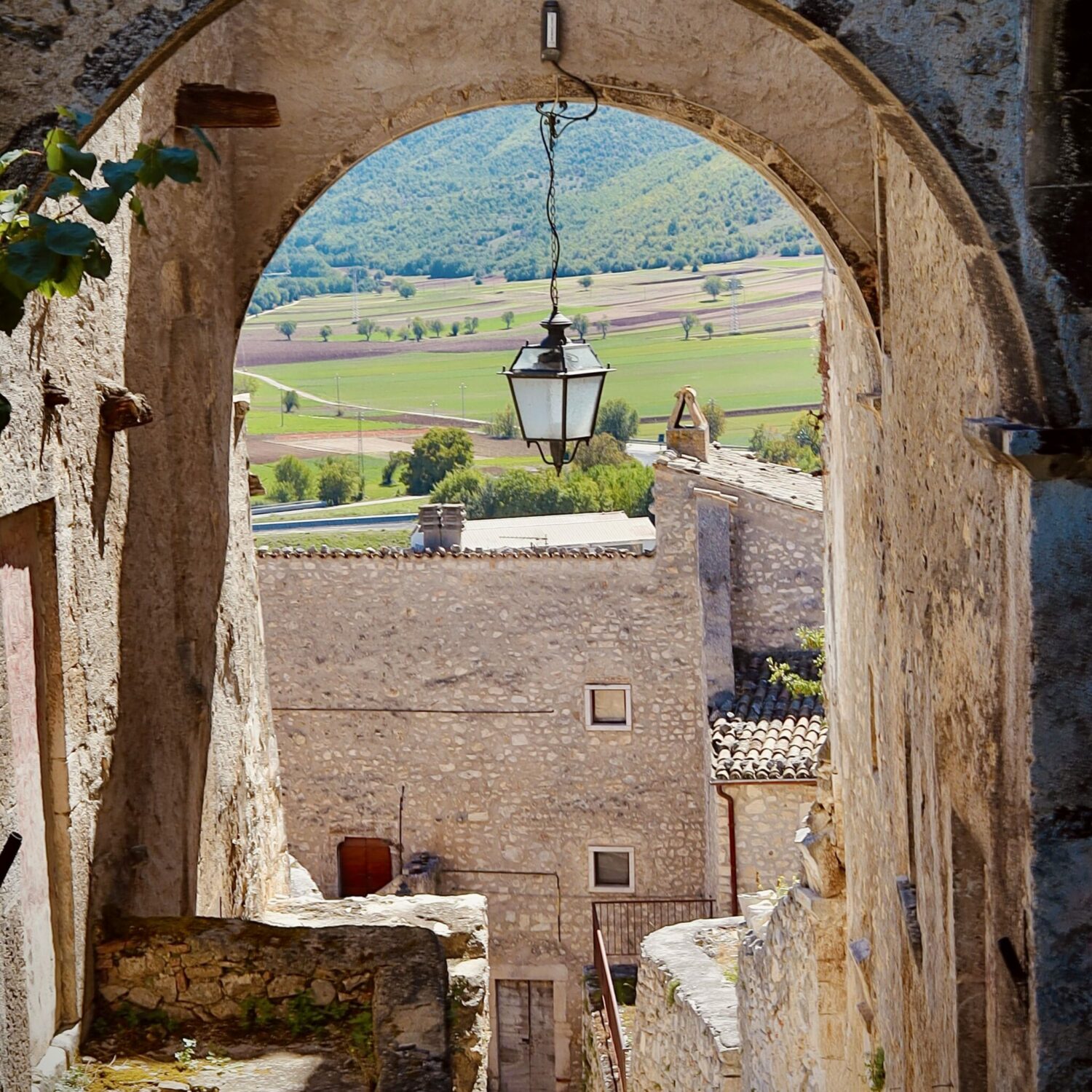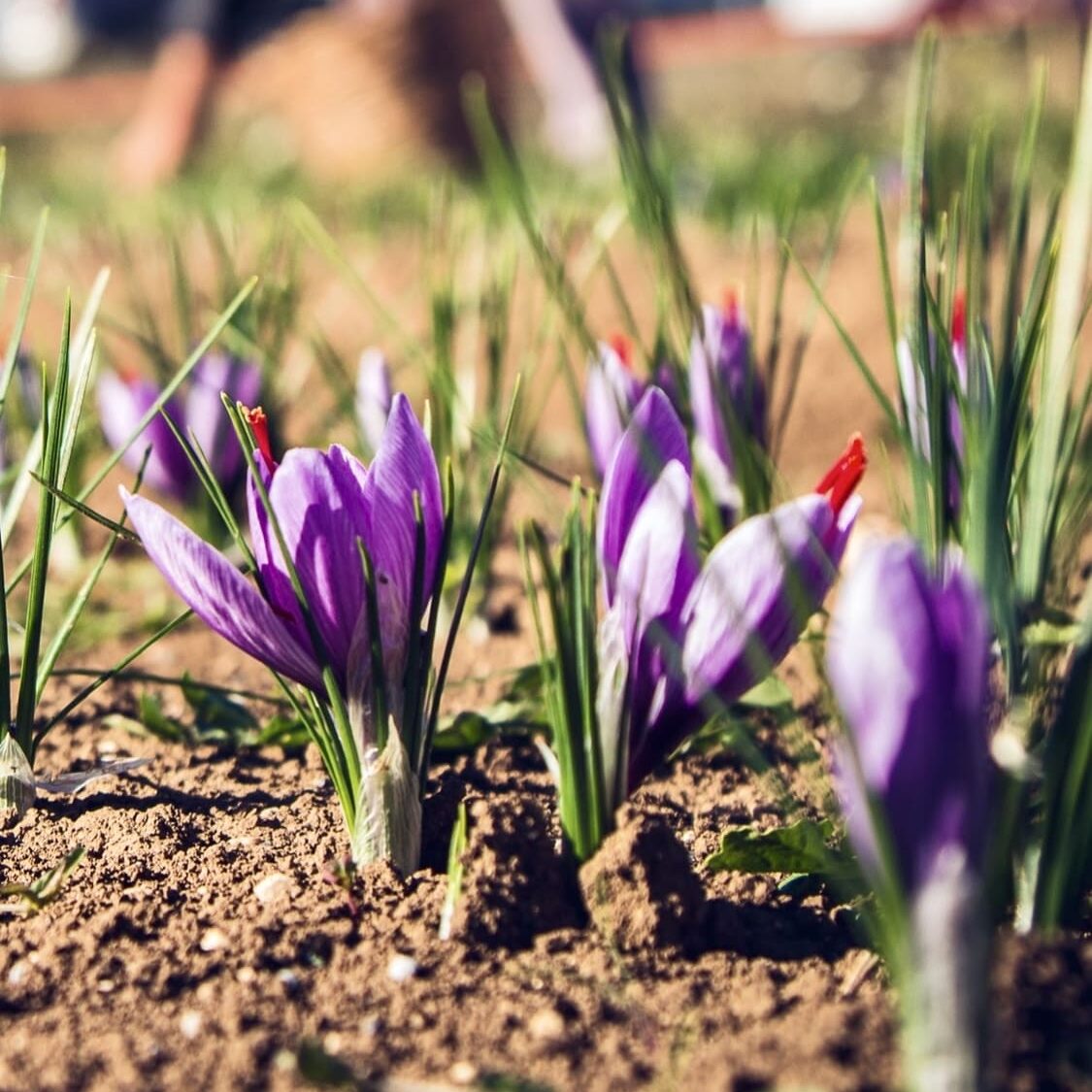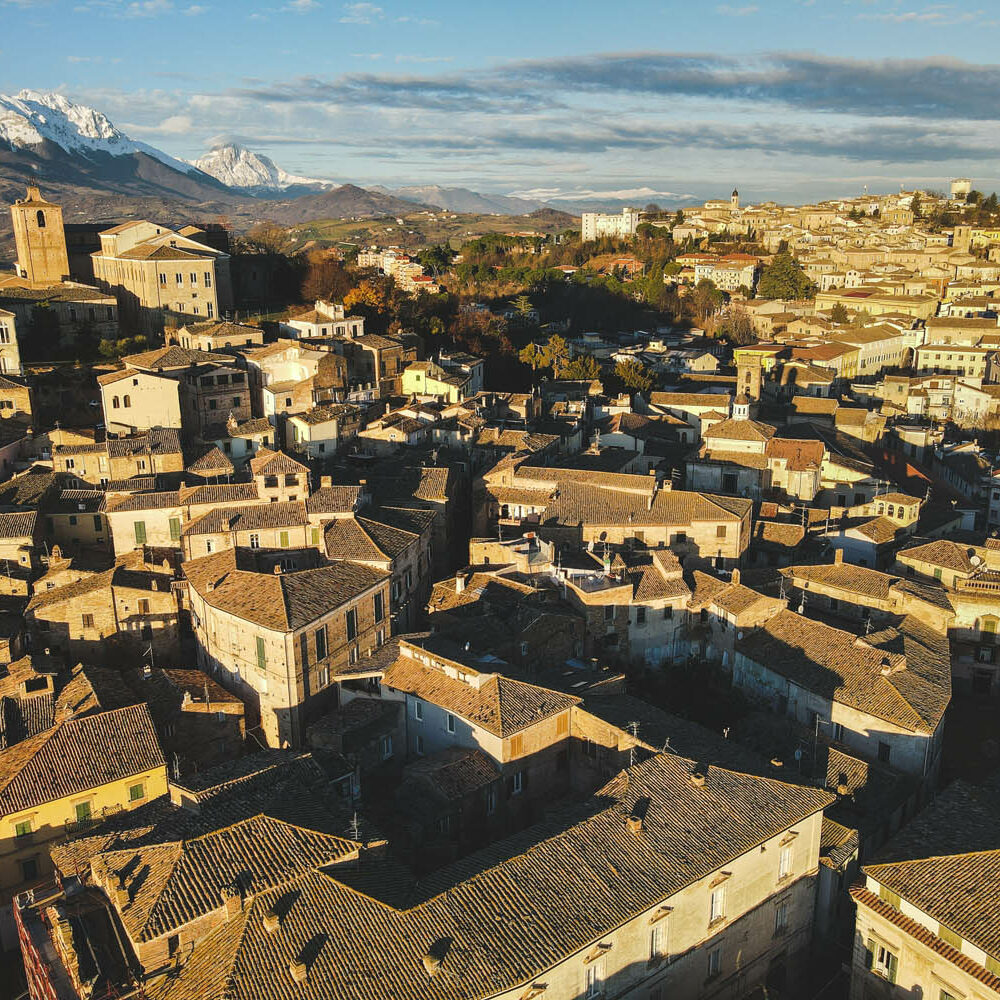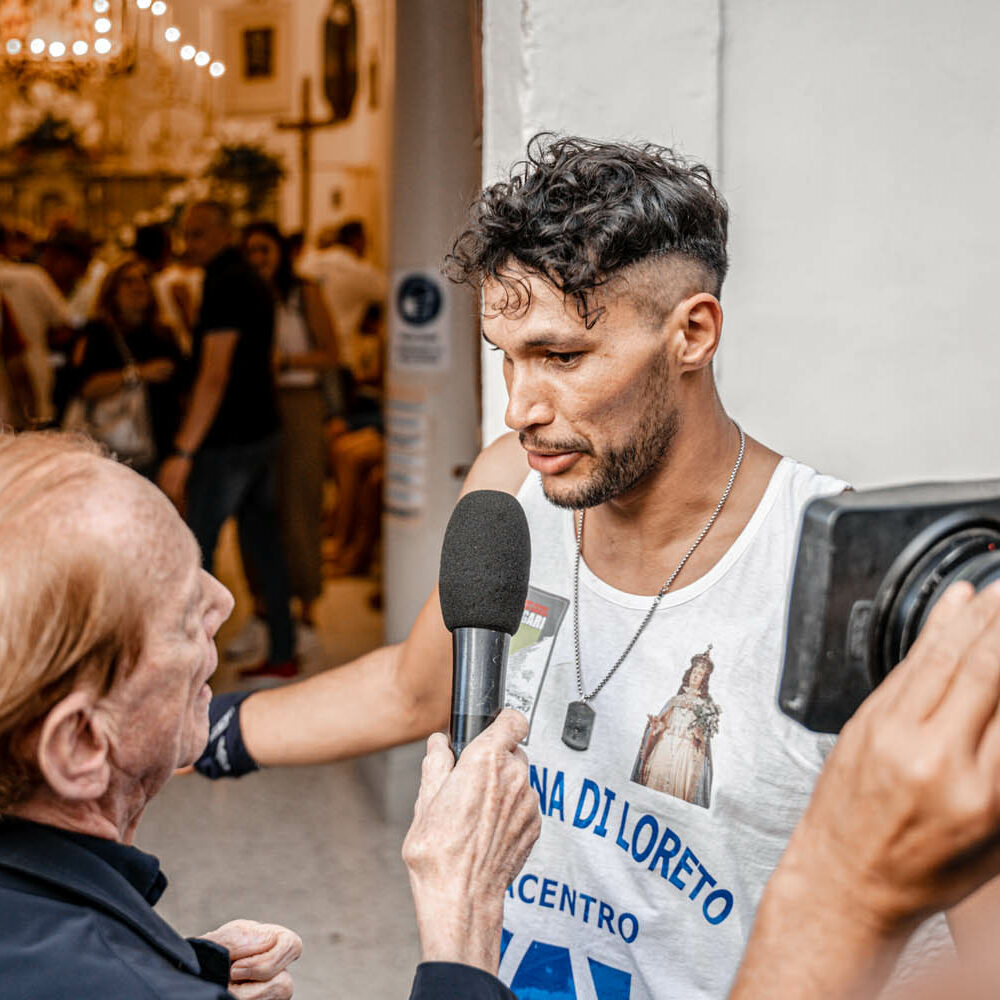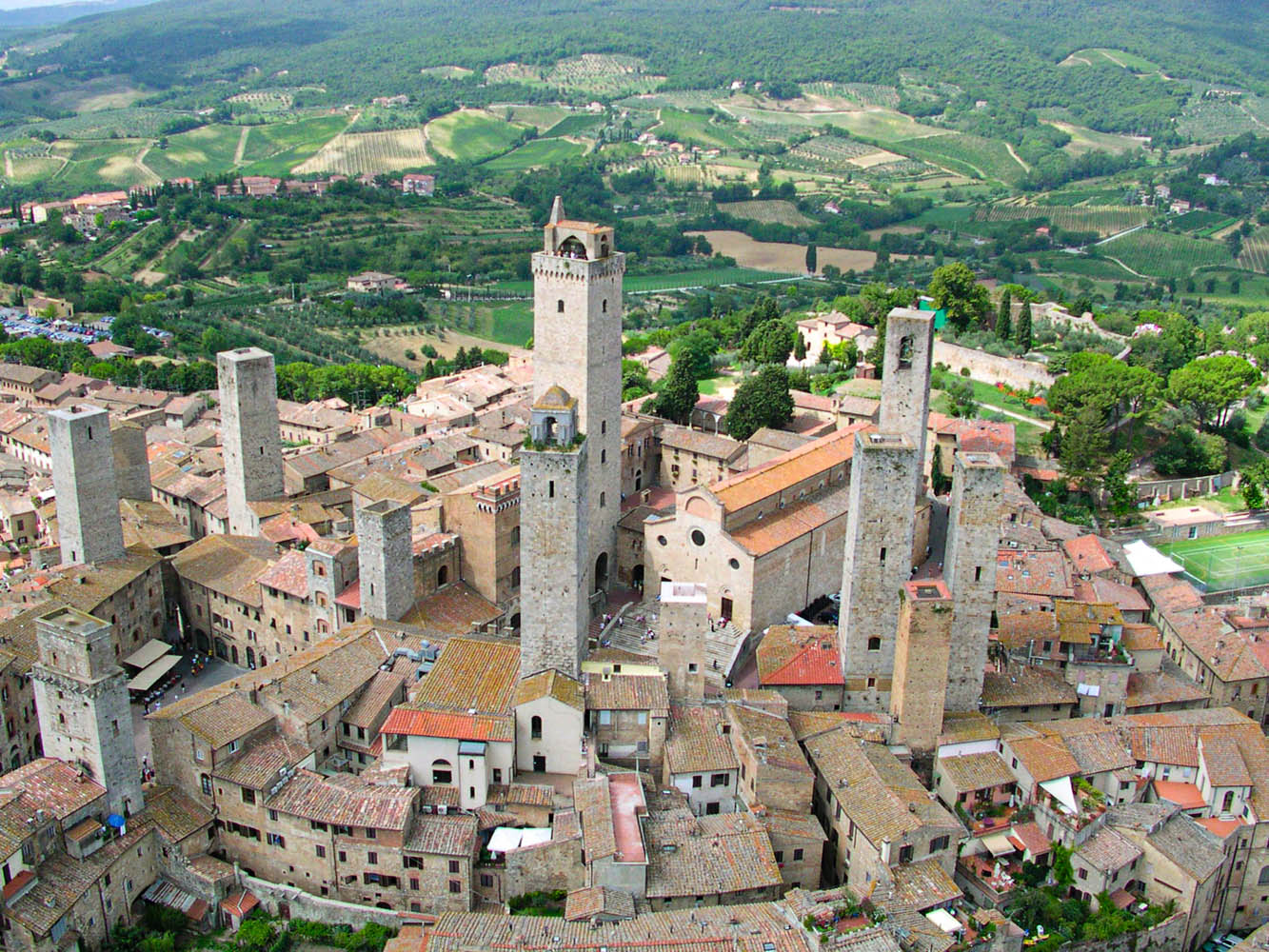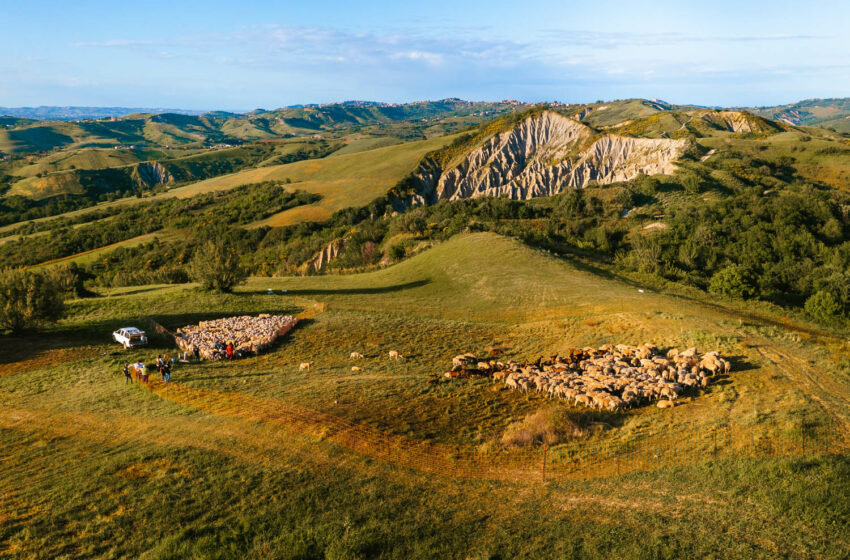
Transhumance, the voice of the flocks and herds on the move. The geometries of the soul along the Abruzzo tratturi
Step by step, breath by breath, the “voice” of the flocks and herds on the move.
Transhumance, from the verb transumare meaning to cross, transit over the ground, is an ancient practice that has shaped both culture and landscapes, fostering valuable social, cultural, and commercial exchanges.
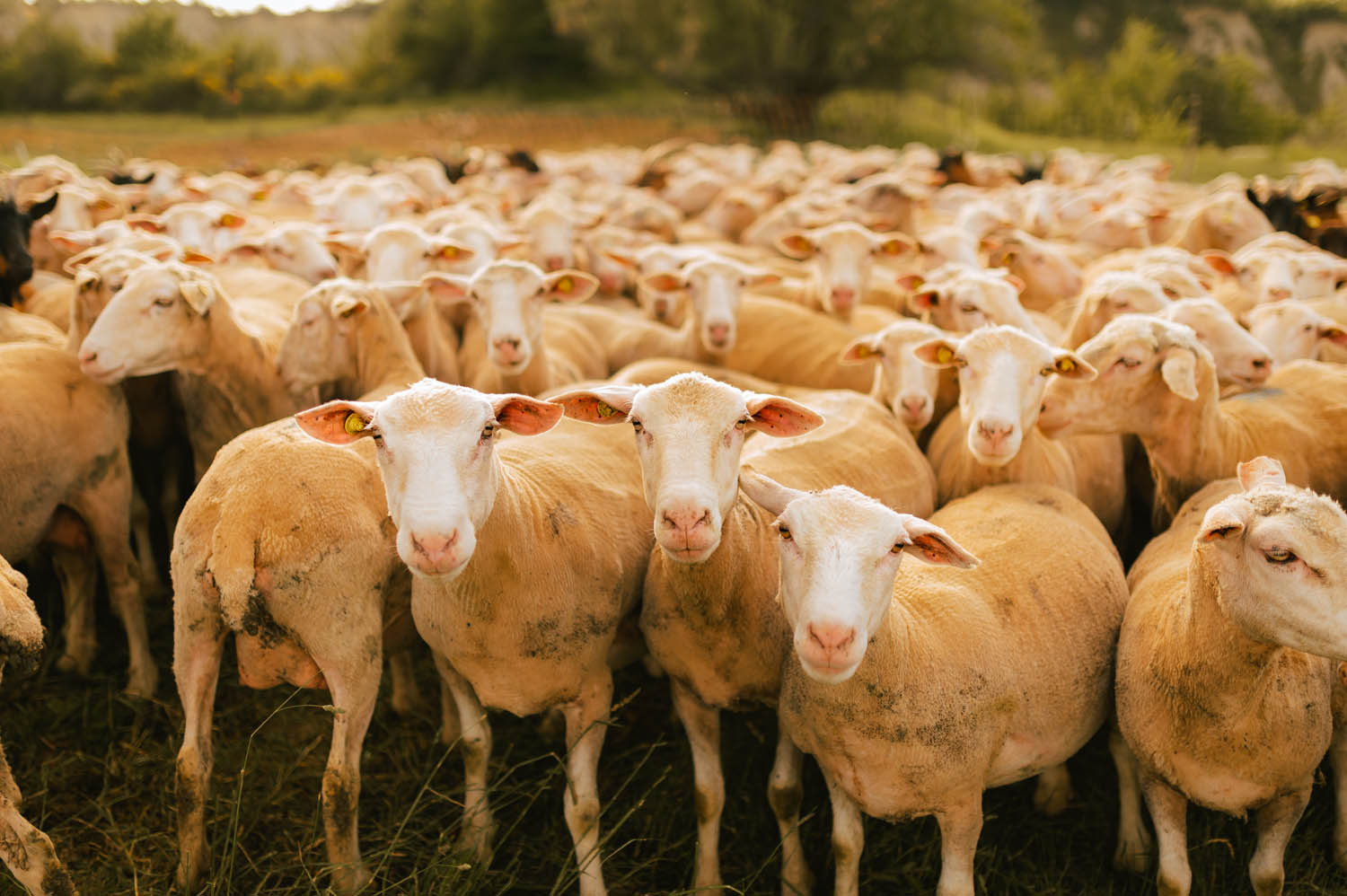
We could define it as the millenary journey of shepherds along the ancient tratturi, the grassy paths traced by the passage of flocks starting from the Abruzzo Apennines, winding for hundreds of kilometers along the main routes before branching off into numerous paths where animal resting places were found, until reaching the Tavoliere di Puglia.
“September, let’s go. It’s time to migrate. Now in the land of Abruzzo my shepherds leave the stables and head towards the sea: they descend to the wild Adriatic, which is as green as the pastures of the mountains.”
Gabriele D’Annunzio, one of the most significant figures in Italian literature, native to Pescara, consecrated the transhumance of the Abruzzo shepherds with these verses from the poem “I Pastori” which, with every word, convey the intimacy of the ritual, not only the beauty, the fatigue, and the passion, but also the image of the shepherd preparing for the long journey, far from home and with great hardship.
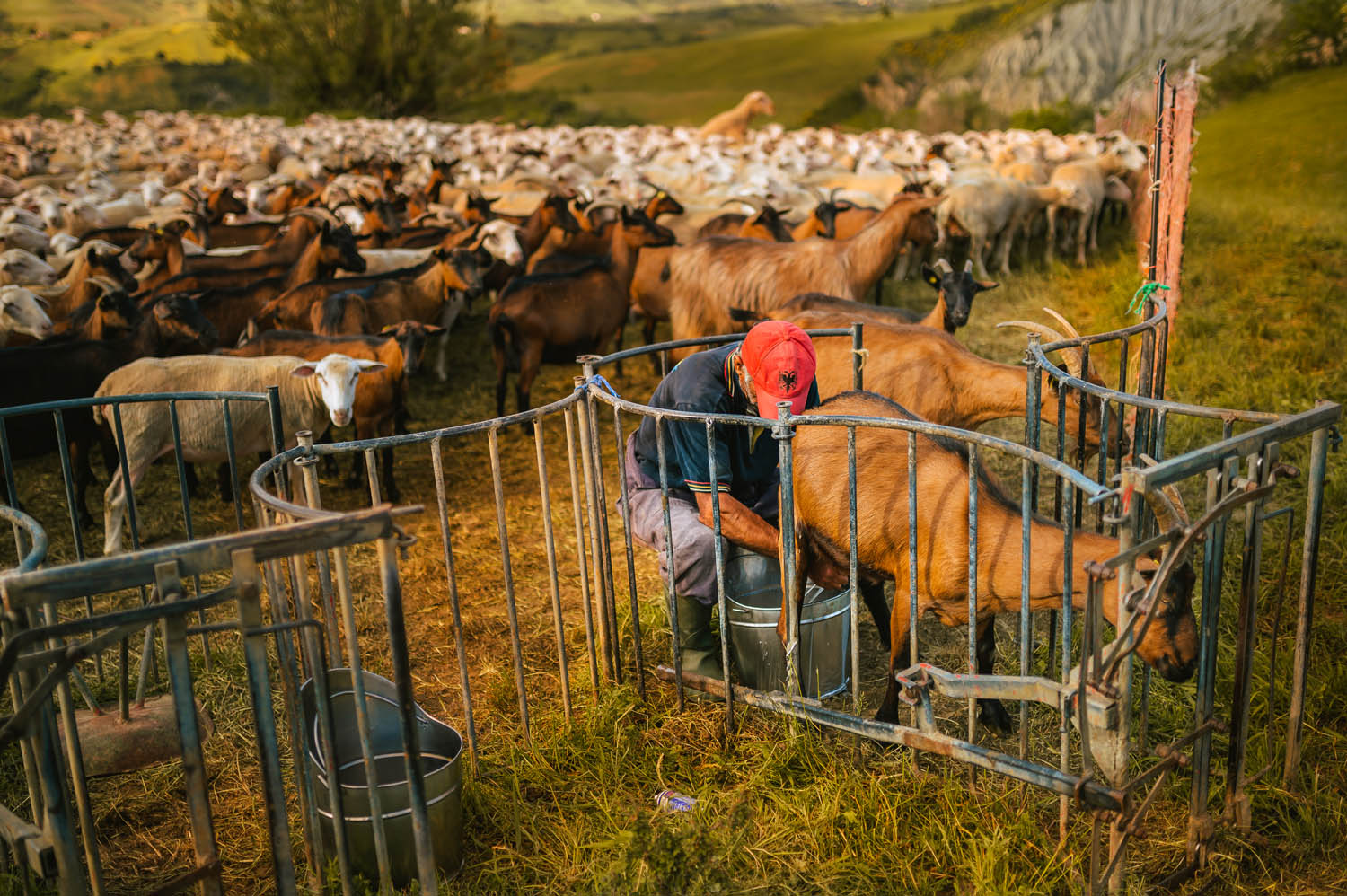
In Abruzzo, the main tratturi are three: the Tratturo Magno L’Aquila – Foggia, the longest among Italian tratturi, a route of 244 kilometers, starts from the Basilica of Santa Maria di Collemaggio where, traditionally, shepherds gathered for departure.
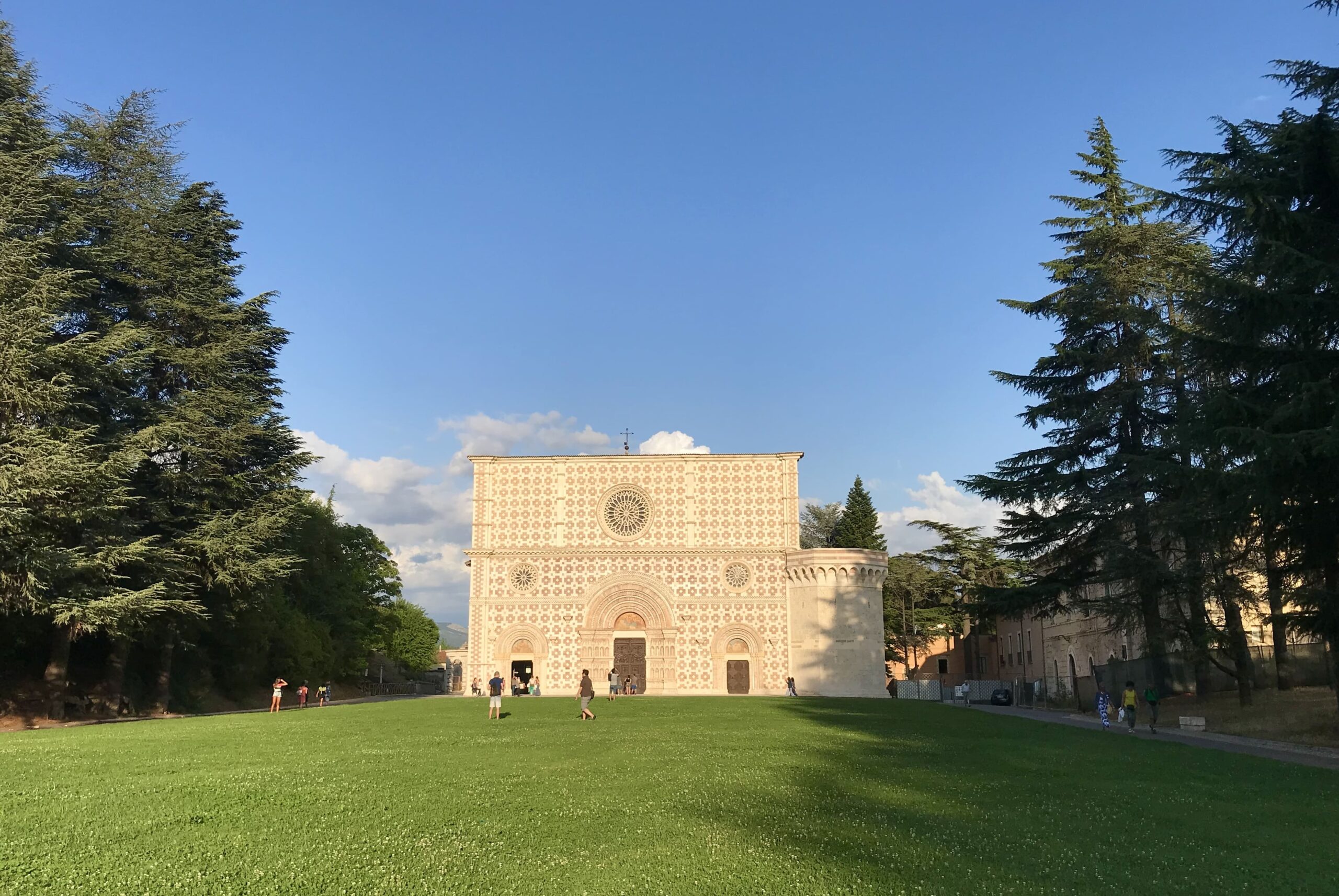
It crosses some of the Most Beautiful Villages of Italy, Scanno, Navelli with its famous plain known for saffron production, Pacentro, and Penne. Seven municipalities in the province of Pescara, including Corvara, Pietranico, and Rosciano, and twenty municipalities in the province of Chieti starting from its capital, Lanciano, Guardiagrele, a Lombard stronghold and home to interesting artisan activities; Vasto with its wonderful Cathedral and Castle; San Salvo with the 11th-century Monastery.
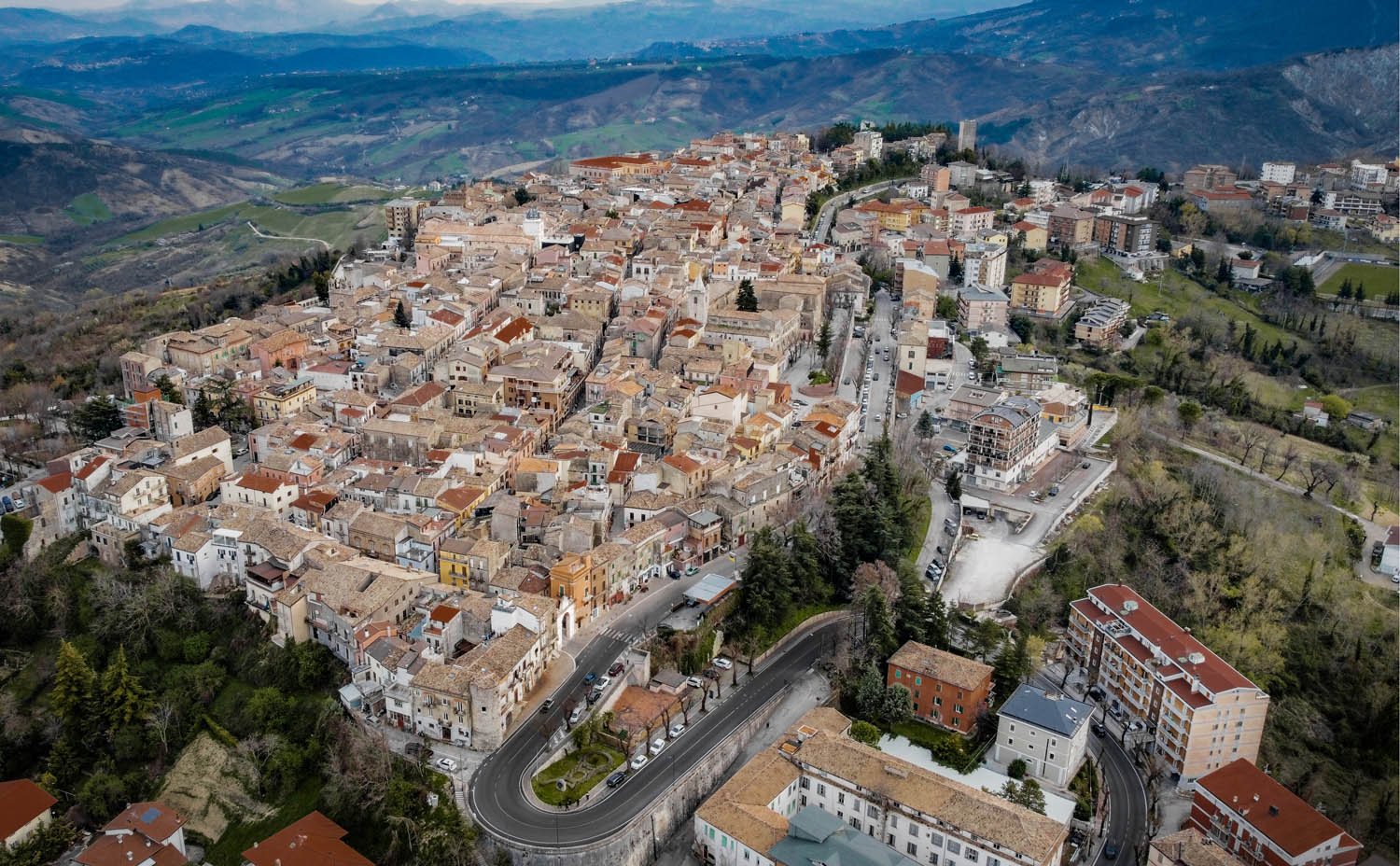
Then the Tratturo Celano – Foggia, which crosses Chieti and Vasto with the wonderful and romantic Costa dei Trabocchi, and the Tratturo Centurelle – Montesecco, 155 kilometers, which crosses Civitaretenga, a tiny hamlet of Navelli marked by Christian and Jewish symbols, testimony of an ancient Jewish ghetto, and ends in Molise passing through Bussi sul Tirino, Torre de’ Passeri, and Manoppello with its famous Sanctuary of the Holy Face, which has been a pilgrimage site for four centuries, “a place of conversions, reconciliation with God, and an oasis of peace” (John Paul II).
The Holy Face of Manoppello, like the Holy Shroud, would depict the face of Christ, and a characteristic unites them: they are considered acheiropoietos, that is, authentic and miraculously originated images of Jesus Christ, but also of the Virgin Mary or a Saint, “not made by human hands”. The veil shows the face of a man iconographically recognizable as Jesus and is visible equally on both sides. According to analyses performed with ultraviolet rays, it is not the result of a painting and perfectly overlaps with the Holy Shroud kept in Turin, both testimonies of the passion of Christ. Manoppello and the Sanctuary are surrounded by a reflective and deeply contemplative sentiment as well as an invaluable historical-artistic heritage.
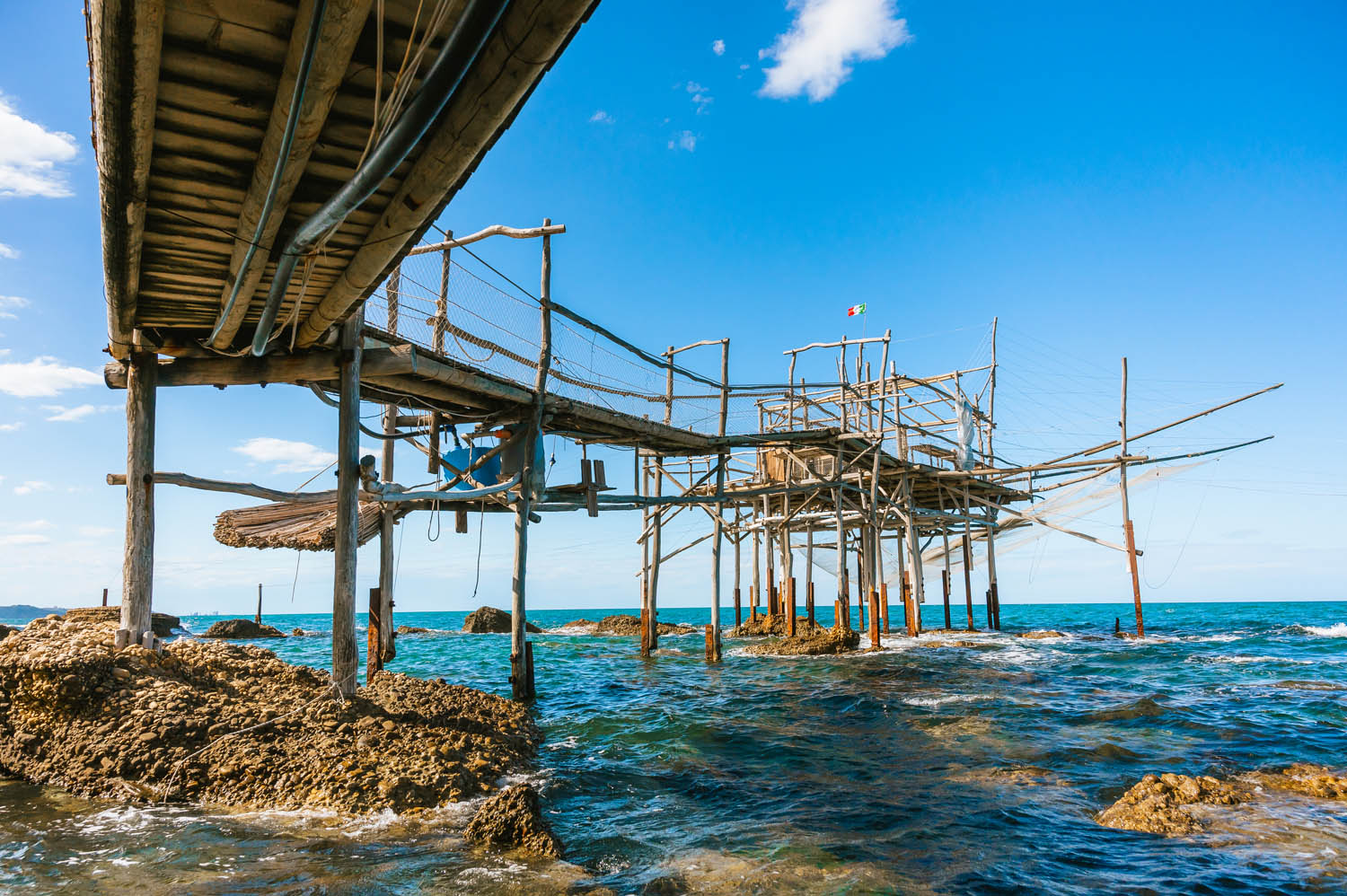
On the Adriatic side, a territory full of suggestions is the Costa dei Trabocchi (or trabucchi), complex fishing machines consisting of a wooden platform installed on poles projecting over the sea, equipped with large balance nets (trabocchetti for fish), reminiscent of structures already used by the Phoenicians. The 19th-century Trabocco Turchino struck D’Annunzio so much that he called it “a colossal spider”.
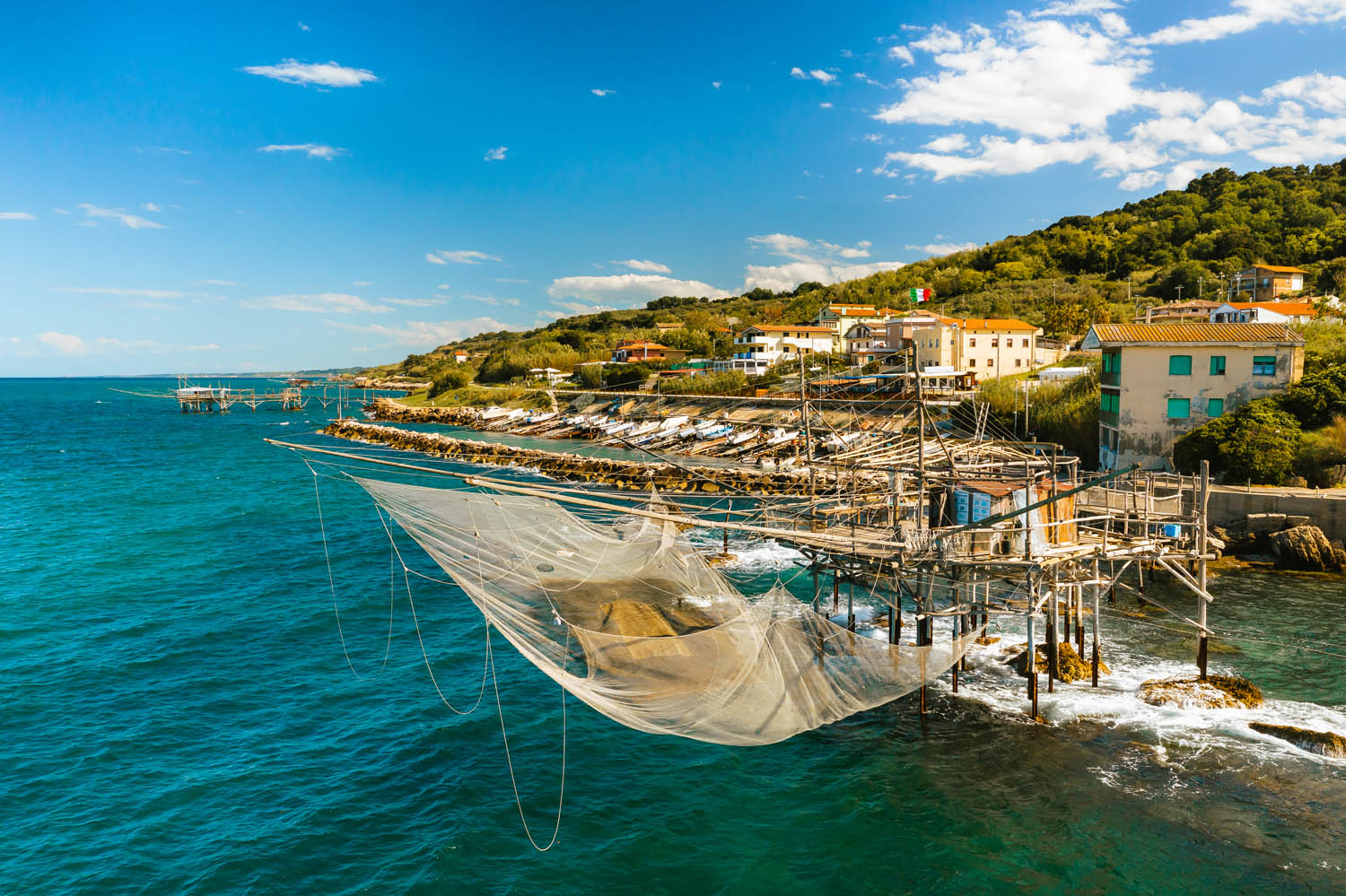
In these unique natural scenarios where even anthropic elements seem to belong to nature itself, guests can discover an enchanting architectural jewel, the Abbey of San Giovanni in Venere, which emanates all its beauty, in Fossacesia, a stone’s throw from the sea.
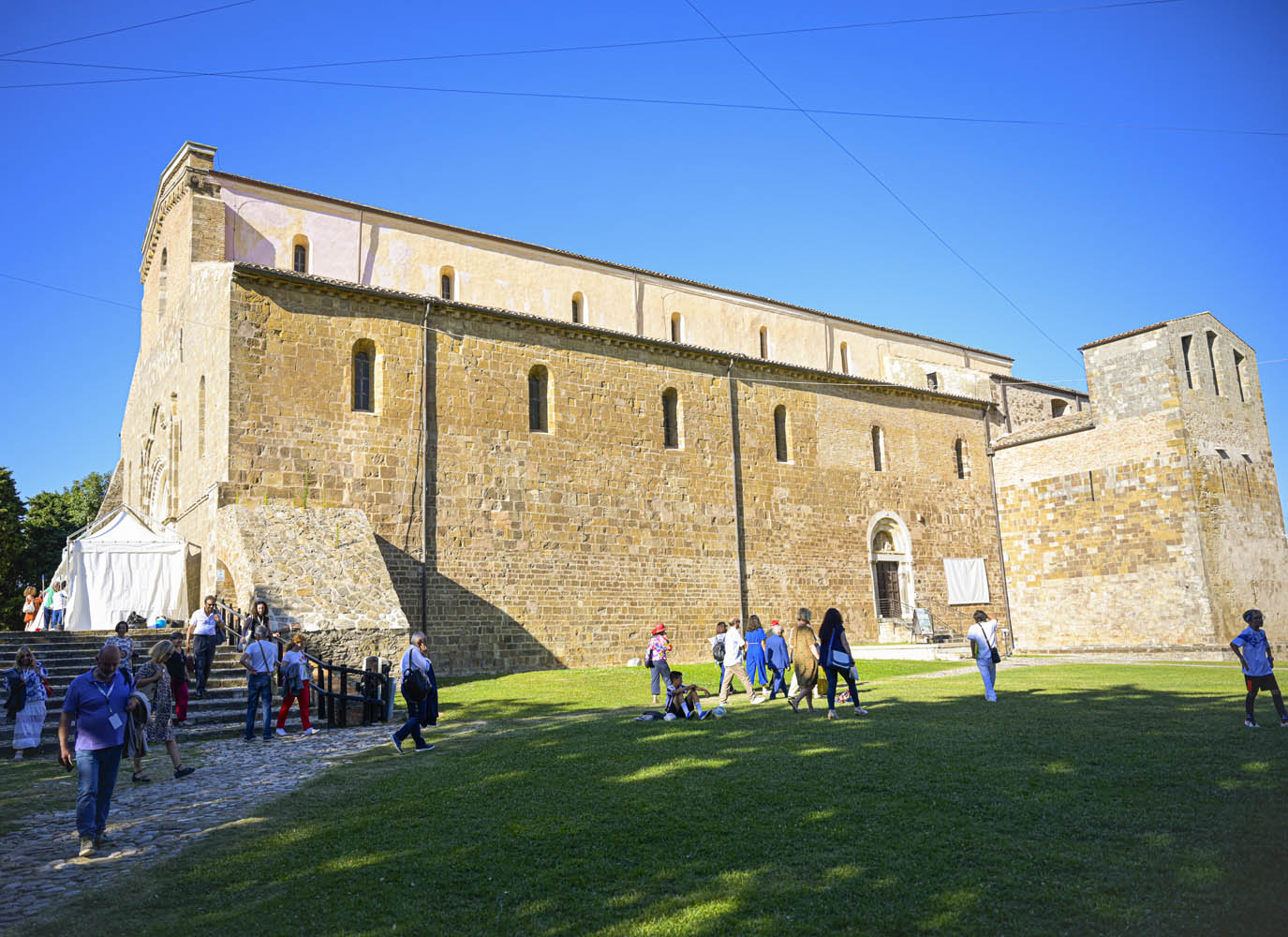
Stages that can be covered on foot, on horseback, by bicycle, participating in a narrative that speaks of resilience, reflection, and traditions handed down from generation to generation.
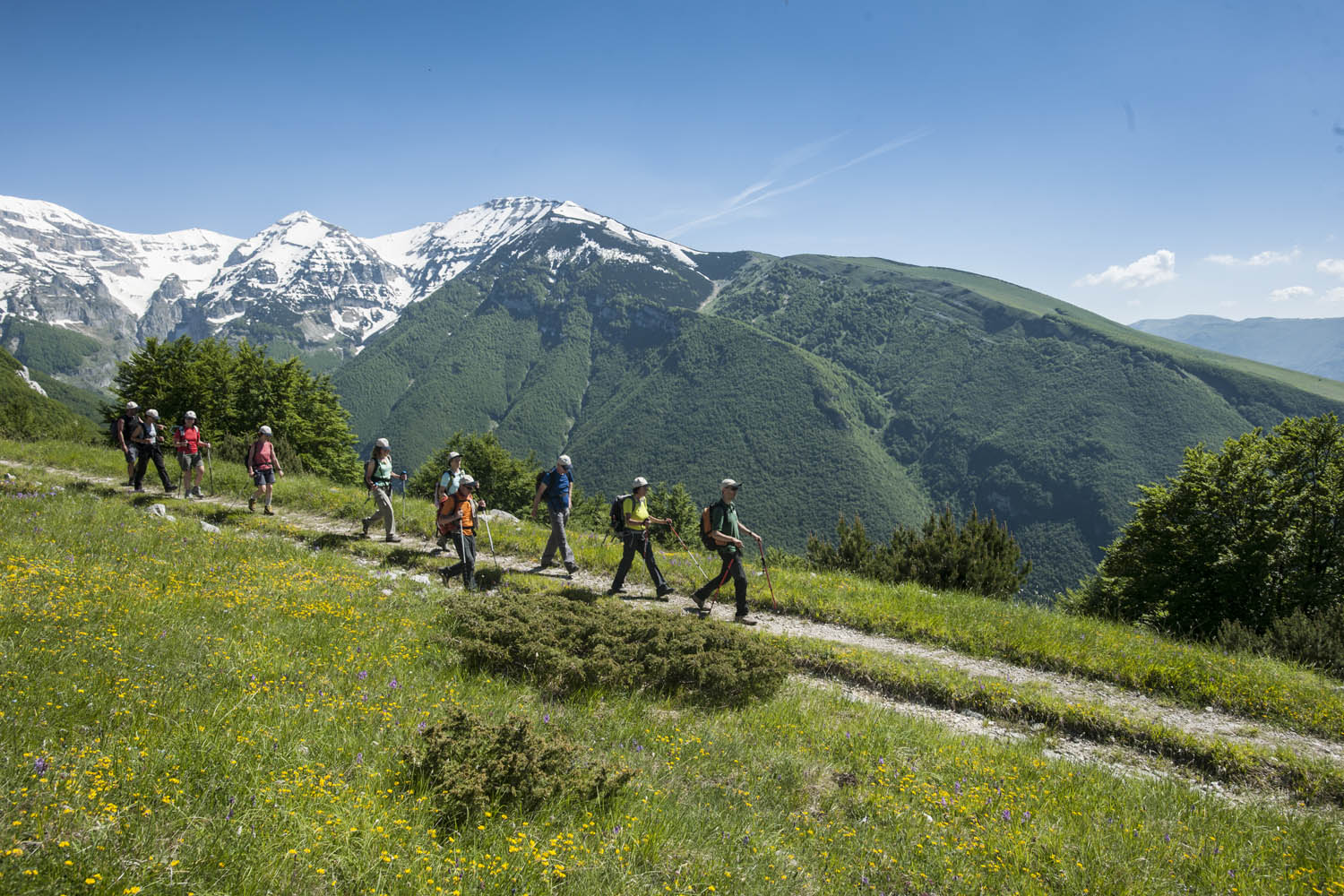
Transhumance has been included by UNESCO in the List of Intangible Cultural Heritage of Humanity, which, based on the transnational request of Italy, Greece, and Austria, has been recognized as a tradition that has shaped relationships between communities, animals, and ecosystems, giving rise to festivals, rituals, and social practices that have been repeated for centuries in all parts of the world. This recognition has allowed work to begin on important projects capable of preserving and transmitting this noble art to younger generations. In this direction, the work of the Chieti-Pescara Chamber of Commerce is highly appreciated.
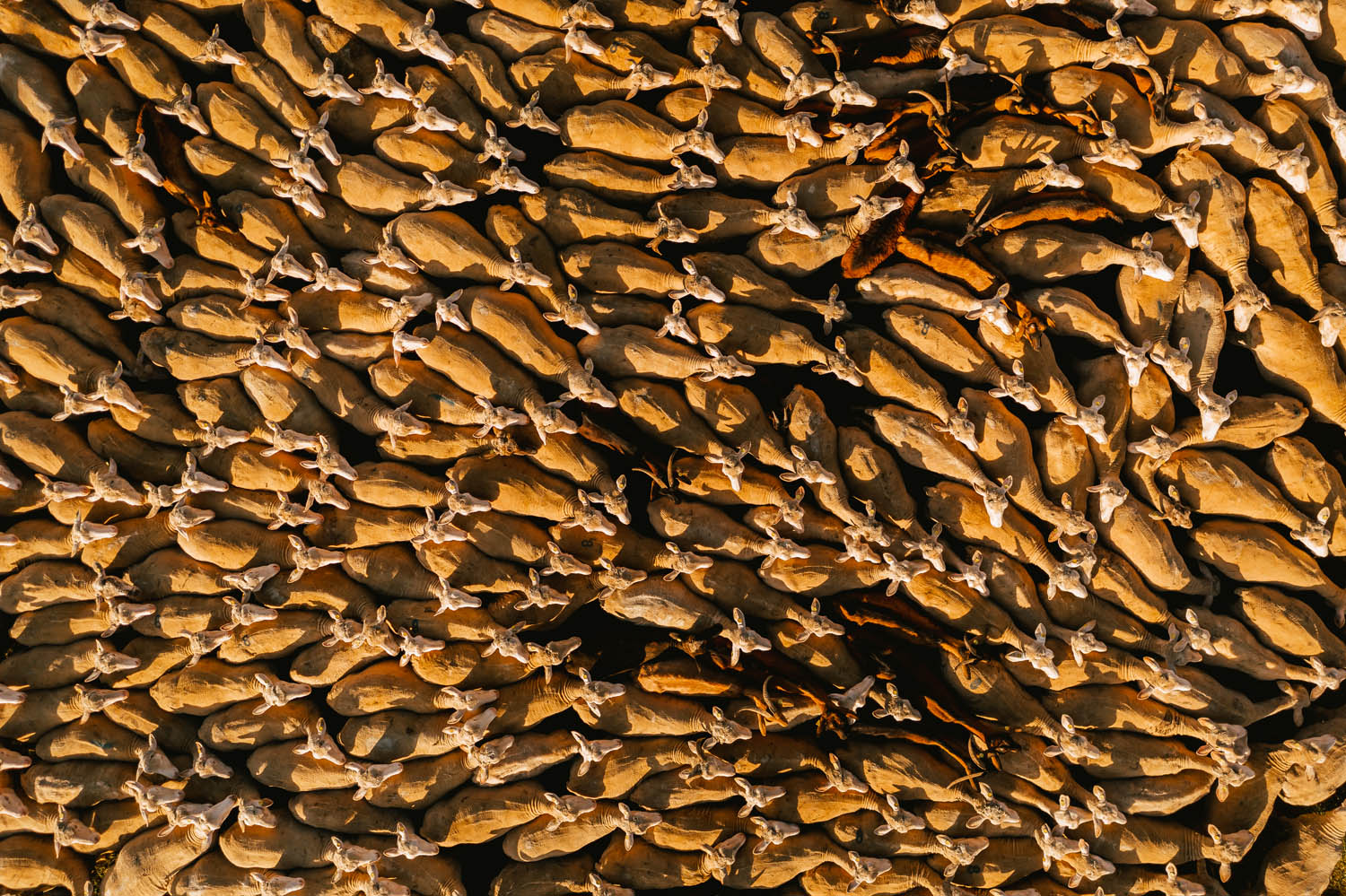
As President Gennaro Strever states: “Our ancient tratturi open our eyes to all the wonders of Abruzzo: the sea, the mountains, the rows of vines, the green fronds of olive trees, the traces of shepherds, the footprints of the ancients. Places that reconnect us with our deepest nature. Restoring and enhancing the tratturi used for centuries by shepherds, converting them for tourism purposes, also counting on the important UNESCO recognition, represents a great opportunity for promoting our territory and for the development of the entire regional productive system. Our organization is investing in the construction of these destinations with the aim of intercepting new trends. Small great destinations, tailor-made, capable of offering a unique and incomparable experience“.
Two are the typical terms of transhumance: “monticazione” which indicates the act of “monticare,” that is, the phase of movement that takes place in the spring, when the shepherd transfers the animals from the plain to the high-altitude pastures; with “demonticazione,” the same path is meant, carried out in autumn, in the opposite direction, always to ensure fresh forage and more comfortable temperatures for the animals.
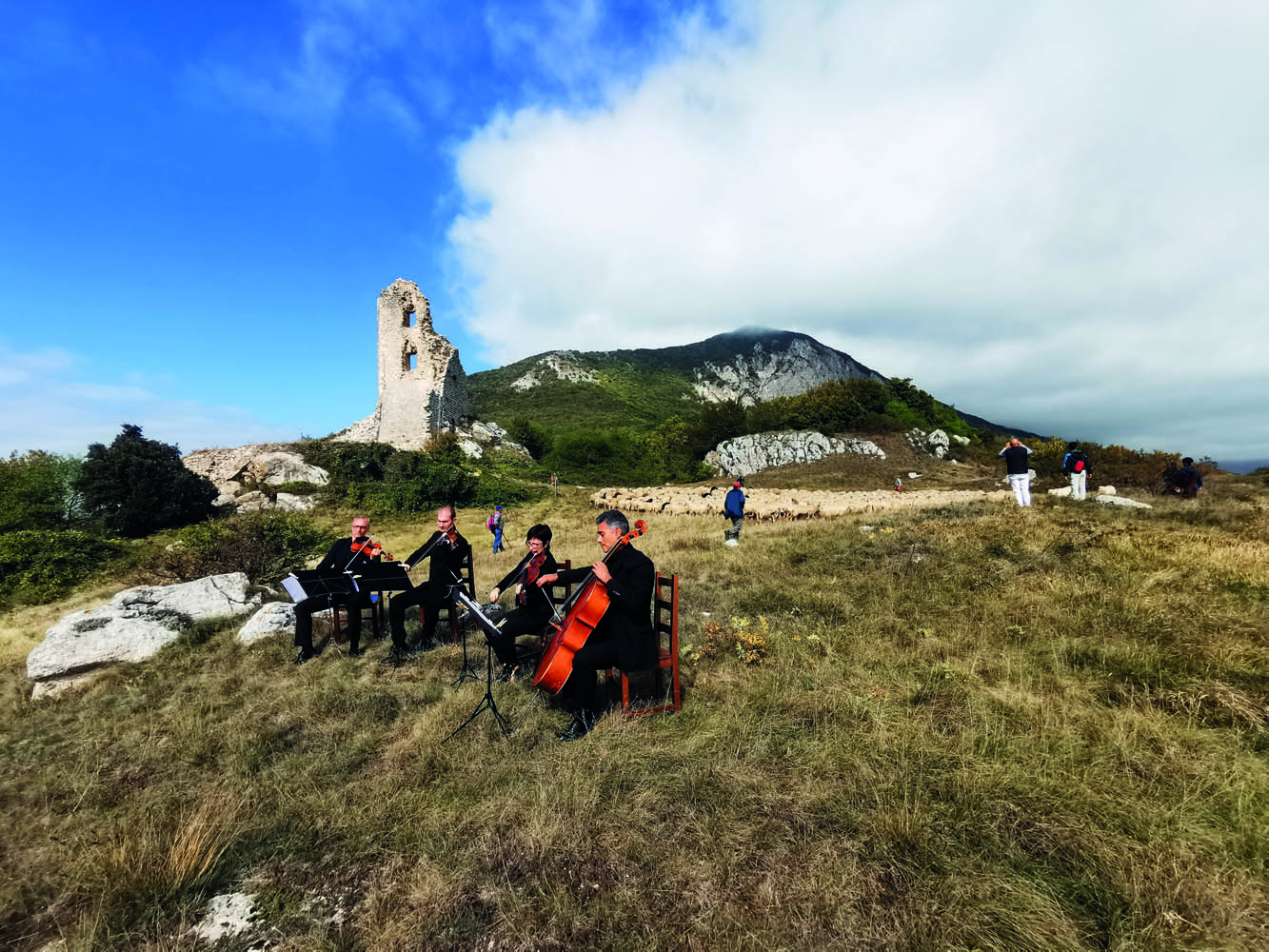
Along the tratturi network, in addition to the natural-landscape component, there is also an “architectural” component that is now part of an important material cultural heritage. Along the route, various equipped infrastructures are located: the “capanne,” temporary dwellings of the shepherds, the churches, sacred places, the “Santuari,” then the “cippi,” blocks of squared stone placed on the sides of the path as boundary markers, the “croci stazionali” and the “edicole votive,” the “fontane,” the “masserie” and the “stazzi”.
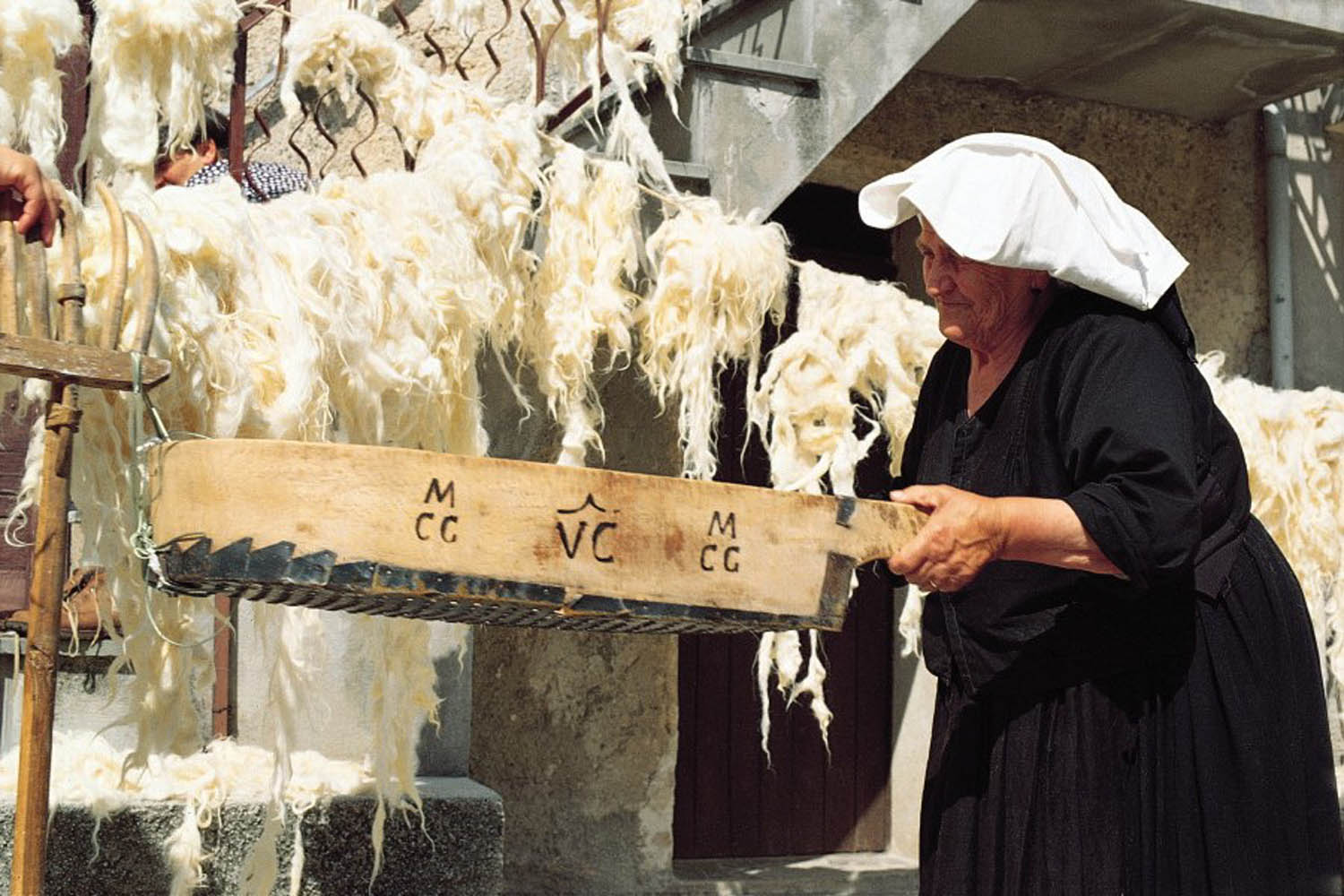
Environmental and landscape value, but also of civilizations that have succeeded, met, and merged. A cultural form, or extension of it, of peoples who with their steps and customs have traced the stages of the passage of time. To travel a tratturo means to embark on a journey along a millenary history made of trade, exchanges, and opportunities. Probably also of ancient loves.
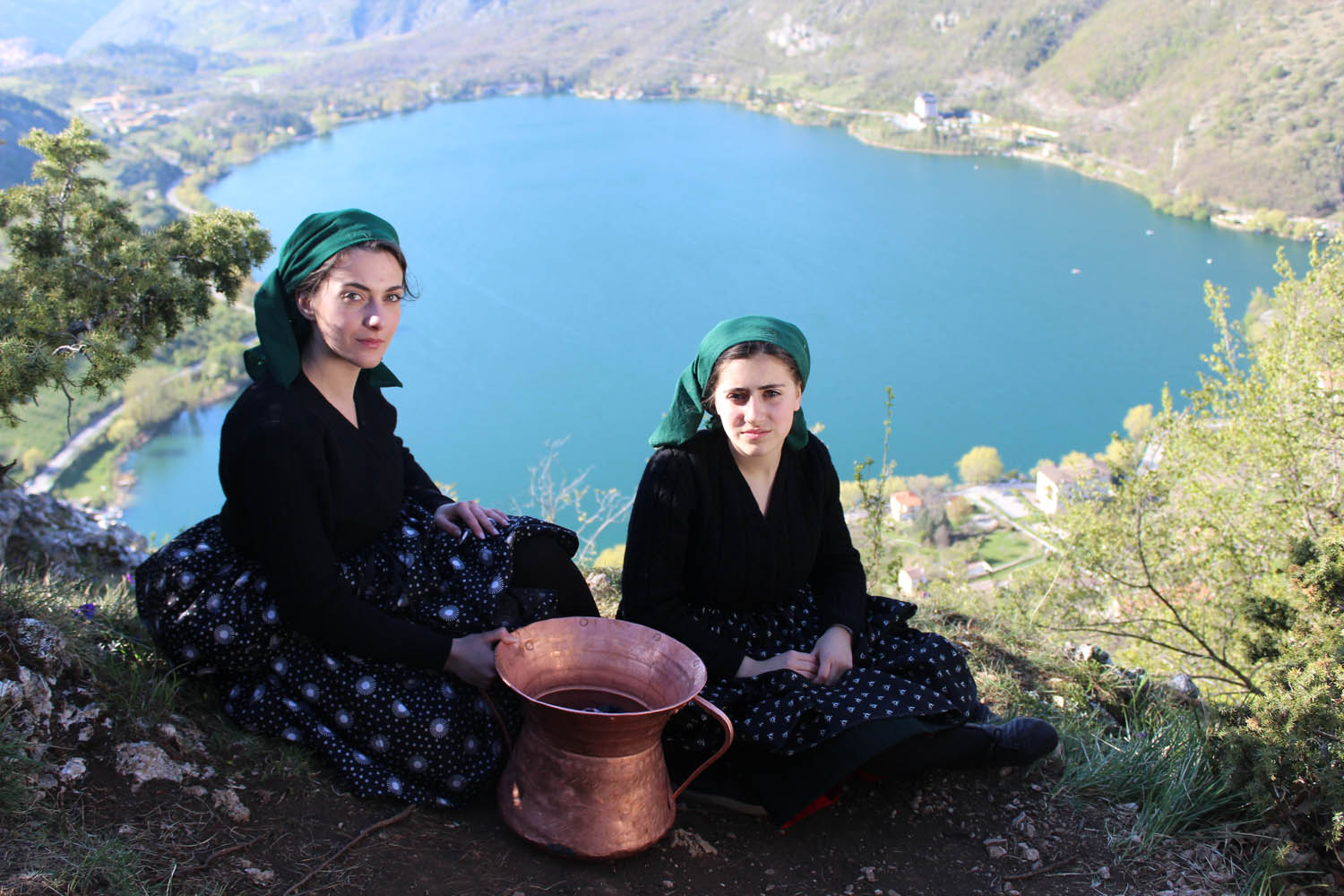
It’s like opening a chest containing an invaluable treasure. Made of songs, popular music, and good, simple, genuine food. Today they are ideal routes to relive tradition, an opportunity to discover territories, the archaic values of cuisine, thus maintaining contact with nature and places, in a slow and reflective manner, appreciating the scents and scenarios without forgetting the sacrifice of those steps that tell stories.
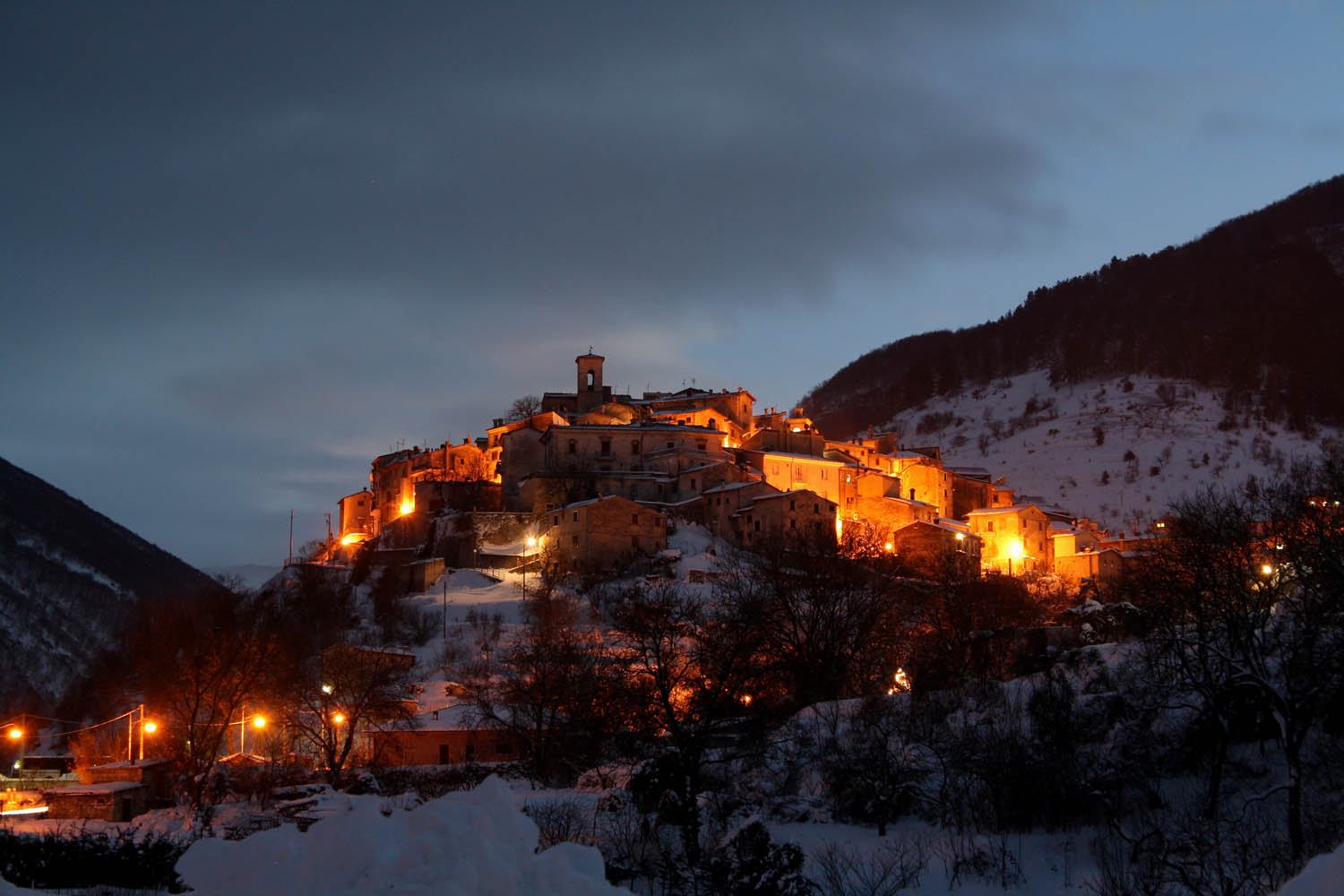
Gallery:
Credits foto:
Giornalista detentore dal 2015 del Guinness World Records TV e Ambasciatore Borghi più Belli d’Italia.
Leggi in:
![]() Italiano
Italiano





